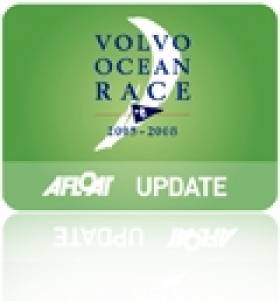Displaying items by tag: Claddagh
Remembering The Unique Character Of The Claddagh
#Claddagh - The Irish Post has a revealing look at one of Ireland's most unique communities – the people of the Claddagh.
Today very much part of a vibrant Galway, the Claddagh was once very distinct from the city just across the mouth of the Corrib.
Indeed, there's much more to the area and its history than the famous Claddagh Ring.
Comparable to communities like the Amish in the United States, the Claddagh people were once easily distinguished by their anachronistic style of dress – and their devotion to the fishing industry.
Lace-making and net-making were once ubiquitous skills in an area where all boys grew up to be fishermen, though that was long ago.
However, there has been a revival of old traditions such as the recent Galway hooker boatbuilding project.
And it's a unique history that deserves to be celebrated with its own maritime museum, says one local historian, as previously reported on Afloat.ie.
The Irish Post has much more on the story HERE.
Raw Sewage Outfall Concern for Galway Residents
#GALWAY BAY - Galway residents are voicing fears over pollution in Galway Bay due to alleged increase in outfalls from the city's sewage system.
As Galway News reports, locals in the Claddagh area spotted a discharge of raw sewage into the Claddagh Basin in July, which was confirmed by City Councillor Catherine Connolly to be an outfall.
Such releases are triggered automatically, like a safety valve, in emergency circumstances, such as after heavy rainfall which backs up the system.
Cllr Connolly has expressed her concern over an increase in the number of such releases over recent months, and their potential contribution to the degradation of water quality in the area - especially following the temporary closure of Grattan Beach in Salthill last month due to E.coli contamination.
She has also called for a report from the council on the difficulties experiences at the Mutton Island water treatment plant resulting from the inflow of grease and fats into the system from hotels and restaurants.
Galway News has more on the story HERE.
#vor – Tradtional boating got a boost at the Volvo Ocean Race in Galway last night at a special ceremony in Galway Harbour when the country's newest community built Galway hooker was named in a ceremony attended by Social Protection Minister, Joan Burton TD. The boat has been named 'Croí an Cladaig'.
The 32–foot boat is the first of its class to be built in Galway since 1922. In keeping with the Claddagh's centuries old traditions it will be launched on Sunday afternoon, after it is blessed in a ceremony conducted by Dominican Fathers.
The new hooker took 18 months to design and build as part of a training scheme organised by the Claddagh based boatmen's association, "Badoiri an Cladaig", FAS, Galway City & County Enterprise Board and several other local community groups.
Chairperson of "Badoiri an Cladaig", Michael Coyne, said the building of the new hooker has created huge excitement in the Claddagh and has given new impetus to efforts to revive the ancient craft of traditional boat building in Galway.































































